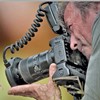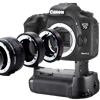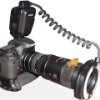 For around twenty years, scientists have been warning us about the collapse of insect populations and their consequences. The photographic exhibition “Images of the Living” lifts the veil on some representatives of threatened populations. Around 50 photographs, accompanied by explanatory inserts. The exhibition was held in a restored chapel whose interior is made of exposed red brick.
For around twenty years, scientists have been warning us about the collapse of insect populations and their consequences. The photographic exhibition “Images of the Living” lifts the veil on some representatives of threatened populations. Around 50 photographs, accompanied by explanatory inserts. The exhibition was held in a restored chapel whose interior is made of exposed red brick.
To photograph the springtails
Photography exhibition - IMAGES of the LIVING
Berlèse apparatus
 The photographic approach of springtails and more broadly that of soil microfauna is confronted with technical difficulties, but also with the need to find these animals within the litter or the various substrates they occupy. We can content ourselves with
The photographic approach of springtails and more broadly that of soil microfauna is confronted with technical difficulties, but also with the need to find these animals within the litter or the various substrates they occupy. We can content ourselves with
Intuitive triggering in macro photography
 This article provides details on a focusing method that I developed specifically for springtails. Macrophotographic shooting at high magnification ratios indeed raises technical difficulties, whether in terms of focusing the subject (map), the very shallow depth of field and the very short distances (minimum and maximum) reduced...
This article provides details on a focusing method that I developed specifically for springtails. Macrophotographic shooting at high magnification ratios indeed raises technical difficulties, whether in terms of focusing the subject (map), the very shallow depth of field and the very short distances (minimum and maximum) reduced...
Photographic material
 No need to consider photographing springtails without a minimum of equipment. It is necessary to have at least a 1: 1 ratio macro lens, that is to say that the size of the subject photographed after passing through the optical system (objective) will be the same on the sensor
No need to consider photographing springtails without a minimum of equipment. It is necessary to have at least a 1: 1 ratio macro lens, that is to say that the size of the subject photographed after passing through the optical system (objective) will be the same on the sensor
Photographing springtails
 Amateur, I learned about animal photography with birds and then I abandoned the telephoto lens to focus on macrophotography. On this occasion I discovered a world of extraordinary variety. Insects and arachnids were my first targets, but every year, when winter came, I was frustrated
Amateur, I learned about animal photography with birds and then I abandoned the telephoto lens to focus on macrophotography. On this occasion I discovered a world of extraordinary variety. Insects and arachnids were my first targets, but every year, when winter came, I was frustrated